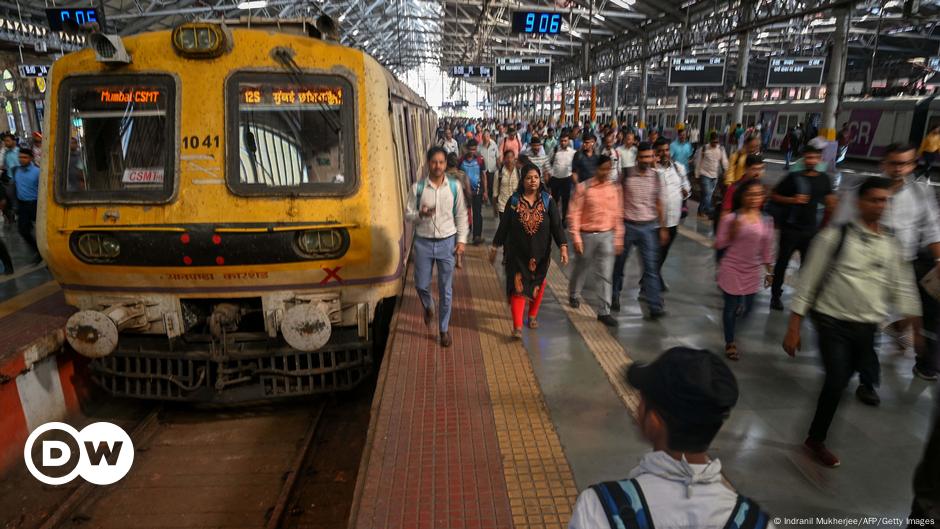Siemens partners with India on railway modernization drive

Last month, German engineering giant Siemens received the largest locomotive order in its history from government-owned Indian Railways.
The deal, worth €3 billion (roughly $3.2 billion), was for 1,200 electric locomotives over a period of 11 years.
The electric locomotives, which have an output of 9,000 horsepower, are to be used for freight transport.
They can pull up to 4,500 metric tons of freight at up to 120 kilometers per hour (roughly 75 miles per hour).
“Indian Railways will use the locomotives for freight transport, advancing the government’s plan to increase the freight transported by rail to 40 to 45% by 2030 from the current 27%,” V Shankar, former executive director of the railway board, told DW.
“The association with Siemens has been long and the locomotives are specified to haul loads of 4,500 tons at a maximum speed of 120 kilometers per hour,” he added.
A boost to ‘Make in India’?
The drives are to be manufactured at a Siemens Mobility plant in India, giving a boost to Prime Minister Narendra Modi’s “Make in India” strategy, under which he has urged foreign businesses to manufacture goods in the South Asian nation.
Assembly will be carried out jointly with the Indian Railways in the western state of Gujarat on the western coast.
The contract also includes maintenance and repair work for a 35-year period.
“Siemens is supporting the sustainable transformation of India’s transportation sector as the country seeks to almost double freight capacity on its railways,” said Siemens CEO Roland Busch, when the contract was awarded.
“I’m proud that this major order will help India achieve its ambitious goal of creating the world’s largest green rail network, as our locomotives will save more than 800 million tons of CO2 emissions over their lifecycle.”
Siemens Mobility CEO Michael Peter pointed out that the new locomotives can replace as many as 500,000 to 800,000 trucks over their lifecycle.
Deepening trade ties
Busch, who was part of a high-powered group of CEOs of major German companies that accompanied Chancellor Olaf Scholz over the weekend to India, said that India has huge potential in green energy, infrastructures and health care.
The group of executives met Indian Prime Minister Narendra Modi in New Delhi to discuss new opportunities for German firms to expand their footprint in the fast-growing economy.
Around 1,800 German companies are active in India.
The German chancellor said during the trip that he wanted progress towards a trade deal between the European Union and India.
The agreement has long been held up by disagreements on tariffs and access for Indian workers to Europe.
Scholz said Sunday that his government wants to make it easier for skilled workers, particularly information technology experts, from India to obtain work visas in Germany as the country struggles with a shortage of skilled labor.
Modernizing Indian railways
India, meanwhile, has one of the largest and busiest rail networks in the world.
The colossal passenger railway system — often described as the nation’s lifeline — is estimated to transport around 23 million people daily, some 8.4 billion passengers each year.
The network operates over 12,000 trains carrying passengers and cargo along 67,415 kilometers of track. It is also the country’s largest employer, with over 1.2 million employees.
The enormous infrastructure, however, requires overhaul and constant maintenance.
The railways have already begun phasing out diesel locomotives and getting closer to their net-zero mission and climate change mitigation goals.
Over 80% of the network has been electrified.
“In the next eight years, we’ll see the railways on a new journey of modernization,” said Prime Minister Modi in December.
The Indian Railways is currently manufacturing hydrogen-fuel-cell-powered eco-friendly ‘Vande Metro’ trains, which are expected to replace the old diesel-powered locomotives that were designed in the 1950s-60s.
In a bid to accelerate green transition efforts, it is also looking to procure dozens of hydrogen trains.
The Indian transporter has reportedly held talks with major players in the sector, including Siemens.
“The collaboration between the Indian Railways and Siemens is a testament to the power of international partnerships and the benefits of sharing expertise and resources. It will make it safer, more efficient, and more environmentally friendly,” said Shankar.
Edited by: Srinivas Mazumdaru
